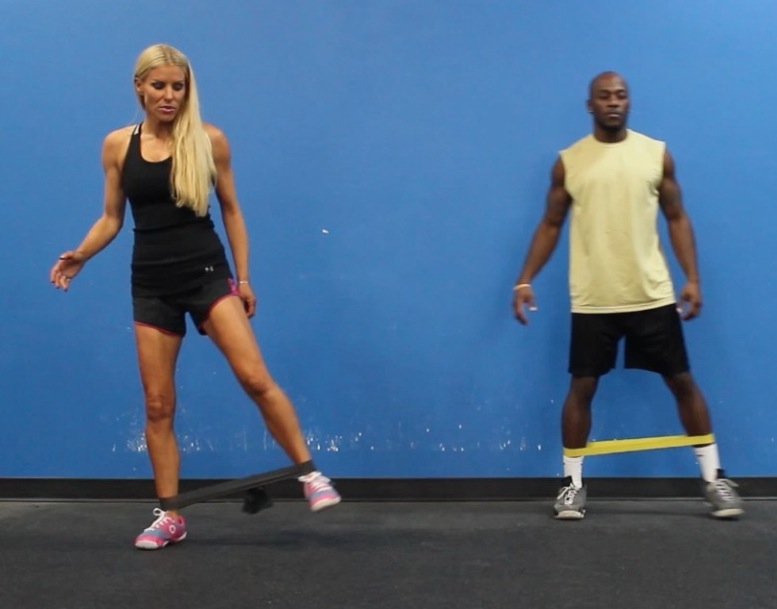Whether you’re looking to take up the asanas of yoga for flexibility or weights training for strength, keeping up a workout routine will take you closer to your fitness goals. Having a trainer obviously helps with this, but it’s costly and totally unnecessary for most people. With a bit of research and strong game planning capabilities, you can create a well-designed workout plan by yourself that’s both effective and enjoyable.
- Consider your health
For the most part, you will need to know your body and what it can take. That means before anything, consult your doctor about a physical medical examination. This is important especially if you are not used to strenuous activity or if you have any pre-existing health issues. Starting out in your golden years often requires some medical advice as well. A thorough checkup will reveal whether or not you should consider limitations, or if you’re free to exercise in any way your heart takes you.
- Set realistic goals or targets
Once you know if you have any limitations, it’s now time to set some objectives. It is a good idea to start small and build up from there, making sure your set goals are realistic. For example, instead of setting a goal of running a marathon by the end of the month, you may strive to get out and walk or run 20-30 minutes six days a week for the next month. Having specific and realistic goals and targets will make it easier for you to be consistent without the likelihood of failure. Fitz recommend that you exercise most days of the week, and you decide what exercises you will do. Just choose exercises that challenge you and fit into the categories of strength, flexibility, flexibility and balance training.
- Make time to rest
While you’re busy setting targets, make sure to prioritize sleep, so that you are giving your body enough time to heal after the hard work. Do whatever it takes to allow yourself seven to nine hours of solid sleep each night. Sure, some of you may scoff at the idea of having such a long sleep, but if you fatigue your body with solid exercise, turn off technology and find a comfy bed in a cozy environment, you may wake up more refreshed than ever. Doing this also contributes to keeping you consistent with exercise since the repair will give your body the strength to continue. Note that too much exercise without rest can increase your chances of injury and lower your immune system.
- Incorporate variety
One of the reasons why some people cannot follow a routine is because it is repetitive and gets boring. You’re also more likely to experience physical and mental burnout faster if your workouts are monotonous. And nothing plummets your motivation level like burn out. So, according to what your body needs, try your best to have some variety in your workout sessions. Luckily, no matter what your goals are, there is more than one exercise that you could do. For example if you’re looking to build abs, you can try roll-ups, plank hip dips, windshields, mountain climbers, etc – the list is endless. Spread the various techniques across your days so that every day presents a new activity. It is also a good way to ensure your body doesn’t quickly get used to your routine and render your efforts ineffective.
- Challenge yourself
Apart from incorporating variety, another way to make sure you don’t get bored easily, or your body doesn’t get used to your routine is to challenge yourself. As a beginner, starting small is the way to go so that you don’t overwhelm yourself. But after some time, you will notice improvements in your capacity, and then it may be time to take it up a notch. So, once you’re able to do the simple things, include activities that are more difficult than the last. You can concentrate on adding more reps, increasing your speed, or you can even do both if you are up for it. Try to do this gradually so that transitioning will be smooth, and you won’t put yourself at risk of breakdown. Ideally, you should wait about four to six weeks before increasing the intensity of your workouts. Whatever the case, make sure you are listening to your body so that you don’t overwhelm it.
- Keep a journal
It will be counterproductive to put in all the work without knowing how much progress you are making. And apart from listening to your body, keeping a record of what you are doing is another great way to determine what exercises are working and which ones you should reduce or remove from your routine. It is also a good source of motivation since you can tell how far you’ve come and how much closer you are to your goals. When keeping records, include both objective milestones, that is, the exercises you’re doing and subjective ones, which involve how your body feels. A combination of the two is a better determinant of progress, what to change and what to stop, as compared to relying on either one. You can either use a book if you like to write or an electronic app to help you efficiently keep track. Luckily, there are so many resources that could guide you on the best way to go about it.
Creating the perfect routine for yourself is within your capacity. Try to have fun as you go along so that it doesn’t feel like a burden, and if possible, invite family or join other people for support and motivation.






